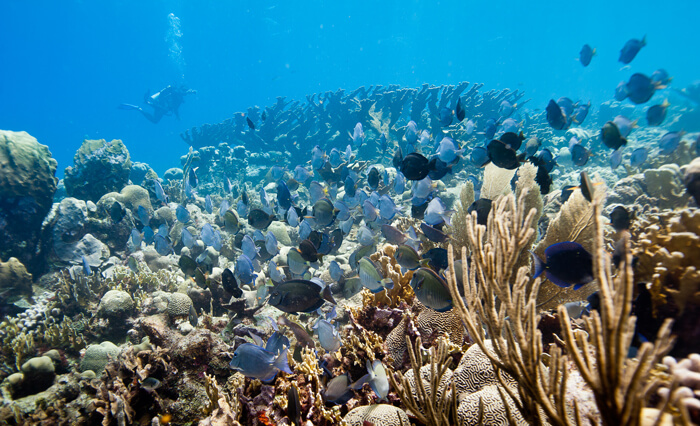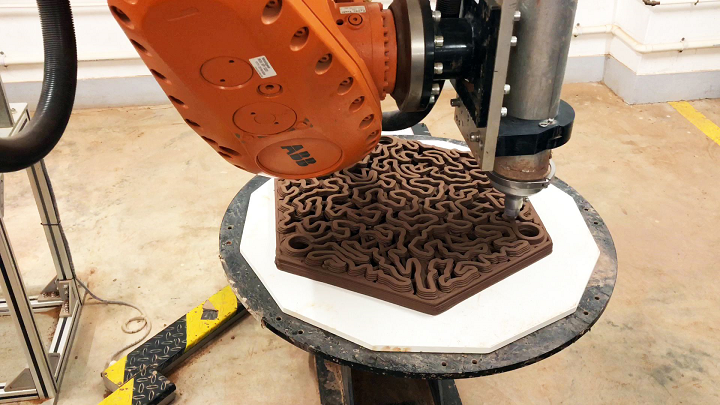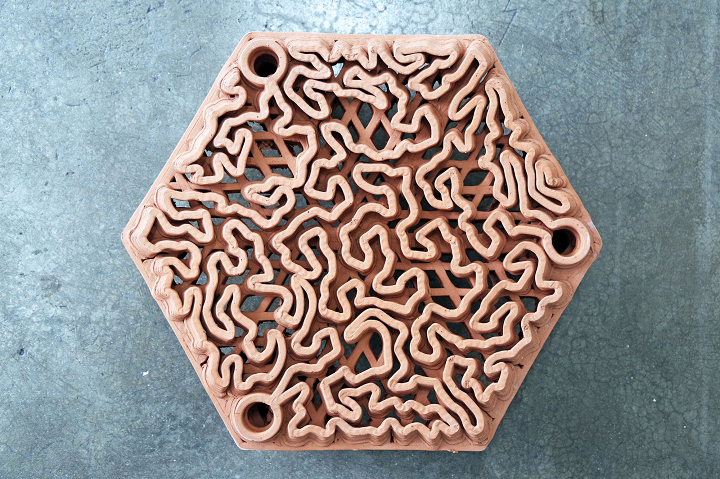In 2018, Typhoon Mangkhut destroyed 80% of the corals near Moon Island, located in the Hoi Ha Wan bay at the north end of Sai Kung Peninsula in Hong Kong. Amid the coral skeletons and other debris, some species of this marine invertebrate still survive in the waters of Hong Kong, but coral reefs grow by just centimeters a year, so it will take a long time before they’re back to their natural state.
Coral reefs all around the world are in trouble due to climate change, overfishing, and many other issues, so global researchers have been working to restore these diverse ecosystems with 3D printing in places like the Caribbean, France, the Maldives, and now Hong Kong.
Researchers Vriko Yu, David Baker, and Phil Thompson from the Swire Institute of Marine Science (SWIMS) of the University of Hong Kong (HKU) are collaborating with architects Christian J. Lange, Lidia Ratoi, Dominic Co Lim, and Jason Hu from the HKU Faculty of Architecture’s robotic fabrication laboratory to rescue the coral reef as part of the Reformative Coral Habitats project with 3D printed terracotta hexagon tiles.
While the flat, reddish tiles may look out of place in the water under Moon Island and Coral Beach, they serve an important purpose. Each 20 kg tile, measuring 65 cm long, is made up of four legs, nine-grid layers, and six coral-like layers, the latter of which won’t interfere with the growth patterns of real coral due to the way they’re designed—according to a brain coral’s geometry, thanks to biomimicry.
“The tiles aren’t conventional tiles. Hong Kong’s subtropical climate entails much underwater sedimentation,” explained Assistant Lecturer Ratoi. “That’s why our tiles have a lot of perforations so that sediment doesn’t deposit on the surface and suffocate the corals.”
Combined, they become an anchoring bed to which broken parts of the original corals can attach and grow, hosted in eight pockets on top of each tile. That way, their genetics match.
Ratoi continued, “The pockets are big enough to allow the corals to grow both horizontally, to become sturdy, and vertically, so that they can compete with other underwater species such as algae which may suffocate them. Corals grow only during the warm season. It’s vital that they are forced to grow in a vertical direction.”
Lange, Associate Professor (Teaching) and Director, Fabrication and Material Technologies Lab & Robotic Fabrication Lab, explained that clay, not unlike the calcium inside corals, is not that strong, and that these tile units do tend to break in the intense ocean currents. But they still thought the material would be better for this project than concrete or plastic, because of the specific conditions in Hong Kong’s subtropical waters, such as water salinity and temperature.
“Some other marine species aside corals may not be able to survive the changes in water, but clay doesn’t damage the underwater conditions,” Ratoi said.
The clay doesn’t even have any special properties or ingredients, it was just purchased off the shelf in the UK, which at least makes it a cost-effective choice.
“When compared to printing other materials, you have to print two structures for clay,” Lange said. “Apart from the main product, you may also have to print another structure to support it so that it doesn’t fall down.”
The architect team uses an ABB Foundry Plus 2 robot to print layers of brown clay out of its 0.6 cm-wide nozzle, and then it’s baked at 1125º Celsius, which causes it to shrink by 11%.
“It’s key strength is permitting the ability to produce highly complex structures,” SWIMS Director Baker, Associate Professor, School of Biological Sciences, said about the technology. “Our reef tiles could not be produced using conventional mold casting technique, and the complexity is a key driver of the quality of the habitat we are providing for our corals and the other wildlife within the site. As we install the tiles, we notice that immediately many species of fish quickly occupy them.”
The test tiles were deployed this spring in a simulated environment, and Ratoi said that they did see coral growing, which gave them the go-ahead to print 128 more clay tiles, which were deployed last month. They don’t have the necessary equipment to produce the tiles “on a manufacturing scale,” according to Lange, but that’s still a pretty big amount.
Lange said , “What’s important is the collaboration between two departments in working towards coral restoration.”
The last of 3D printed clay tiles was recently deployed, and the researchers and architects will monitor coral regrowth over the next two years, thanks to an Autonomous Reef Monitoring System that detects signs of life on the organisms. The SWIMS team is projecting that a 40 square metre area of coral habitat will be restored.
“This is quite small compared to the total area of coral communities in Hong Kong. However, even small patches of corals can enhance local biodiversity by creating a home for other species, and small patches can be very important in the long-term by generating propagules – baby corals that can settle on nearby areas thus spreading corals naturally in our area,” Baker noted.
(Source: Hong Kong Tatler / Images courtesy of Robotic Fabrication Lab, Faculty of Architecture, HKU)
Subscribe to Our Email Newsletter
Stay up-to-date on all the latest news from the 3D printing industry and receive information and offers from third party vendors.
Print Services
Upload your 3D Models and get them printed quickly and efficiently.
You May Also Like
Consolidation in AM: How 2025 Is Shaping the Industry’s New Normal
The first half of 2025 has been marked by a clear shift in the additive manufacturing (AM) industry. Companies are no longer just focused on developing new tech by themselves....
Etsy Design Rule Change Reduces Selection of 3D Printed Goods
Online marketplace Etsy has implemented a rule change requiring all 3D printed goods on the site to be original designs. The update to the site’s Creativity Standards states, ¨Items produced using...
U.S. Congress Calls Out 3D Printing in Proposal for Commercial Reserve Manufacturing Network
Last week, the U.S. House of Representatives’ Appropriations Committee moved the FY 2026 defense bill forward to the House floor. Included in the legislation is a $131 million proposal for...
Transforming From Tourist to Native: Duro CEO Michael Corr Explains Why the Company Rebuilt its PLM Software on AI
In these early innings of the AI boom, many market analysts have expressed concern that AI spend has gotten too far ahead of the technology’s proven ability to deliver significant...





































